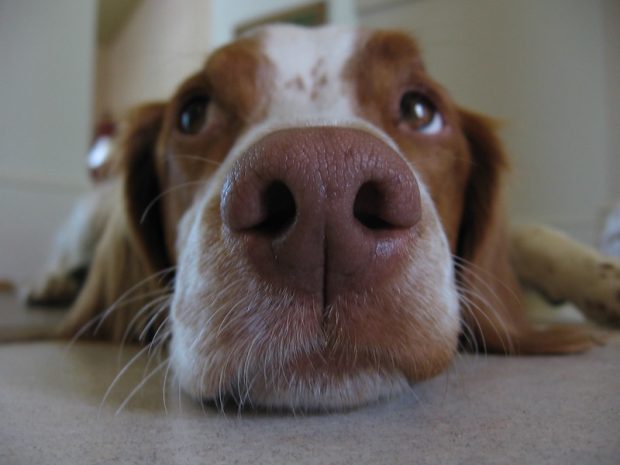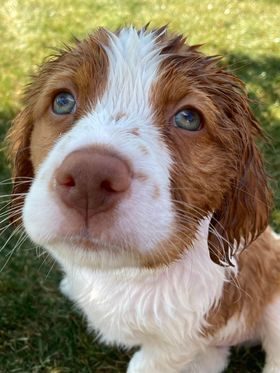
Scroll down to the video for an insight into our post title:
The tiny dot running across the video is a Brittany, the clip from the @dogumentarytv piece, “Hunting with Brittany Dogs.” We share it to illustrate why the AKC breed standard penalizes tight nostrils, and instead calls for nostrils “well open to permit deep breathing of air and adequate scenting.”
When hunting, Brittanys run.
All day long.
Referring back to the standard, the general description of the breed is that of “a great ground coverer.” That means that when hunting, they run. A lot.
It isn’t just that the dog has to be able to adequately scent, or that he or she has to be able to be able to breathe deeply while running. It’s also that the Brittany needs to be able to breathe through their nose because their mouth has a big bird in it.
The eight year old clip below illustrates the point, and it comes from “Pheasant Hunting with Brittany Spaniel [sic*] by Mark Sanderson.
Parenthetically, and for anyone wondering about the [sic] above, the Latin adverb is used to indicate an error in a quoted passage. In this case, we used it because in 1982, the AKC dropped the word ‘spaniel’ from the breed name after it was determined that the Brittany is less a flushing dog like a spaniel, and more of a pointing breed. Craig Koshyk calls the Brittany “the poster child of the French approach to pointing dogs,” and thus, the breed hasn’t been officially known as the “Brittany Spaniel” in over forty years. Some, however, now call the breed the “American Brittany,” perhaps to distinguish it from the French Brittany which has a different hunting style, may be smaller, carries the black color gene, and, some say, is a bit slower.

Prairiestorm Glacier (aka “Banff”) a Brittany co-owned by Julie Ann Merrick, shows off her proper brows
According to the AKC, the Brittany has earned the title of Dual Champion more than any other Sporting Group breed as of 2021, and, in fact, got its 500th Dual Champion
title in 2006. Some consider the breed to be among the most versatile of bird dogs, and we circle back to the breed’s conformation as critical to its success. A heavy, expressive eyebrow protects eyes from briar and bramble.
The skull is well chiseled under the eyes to keep the lower lid from being pulled back lest it form a pocket (or haw) that would catch dirt, grass or weed seeds, and dust. A snippy nose can’t accommodate a downed bird, nor does the dog need the added bulk of a nose that’s too broad or heavy. As they say, form follows function, and the aforementioned attributes is just from the neck up.
Image: “Schnozz 1” by Craige Moore is shared under Attribution-NoDerivs 2.0 Generic (CC BY-ND 2.0)
